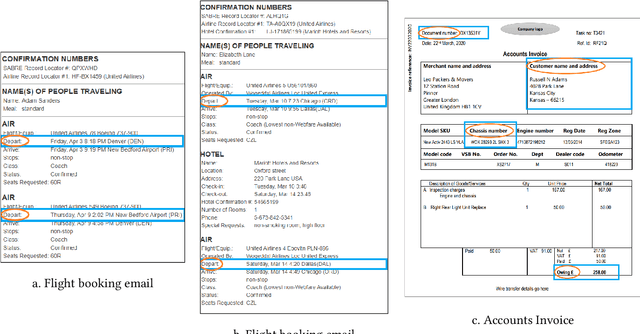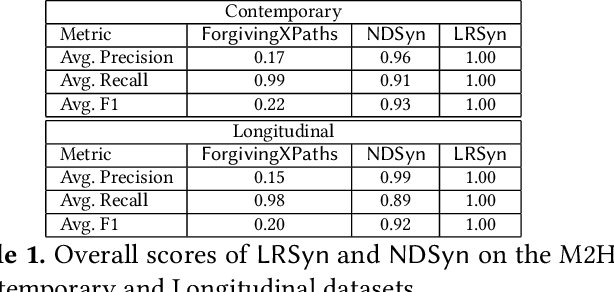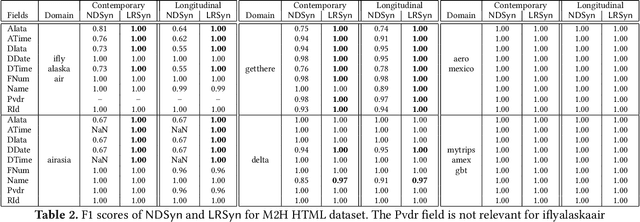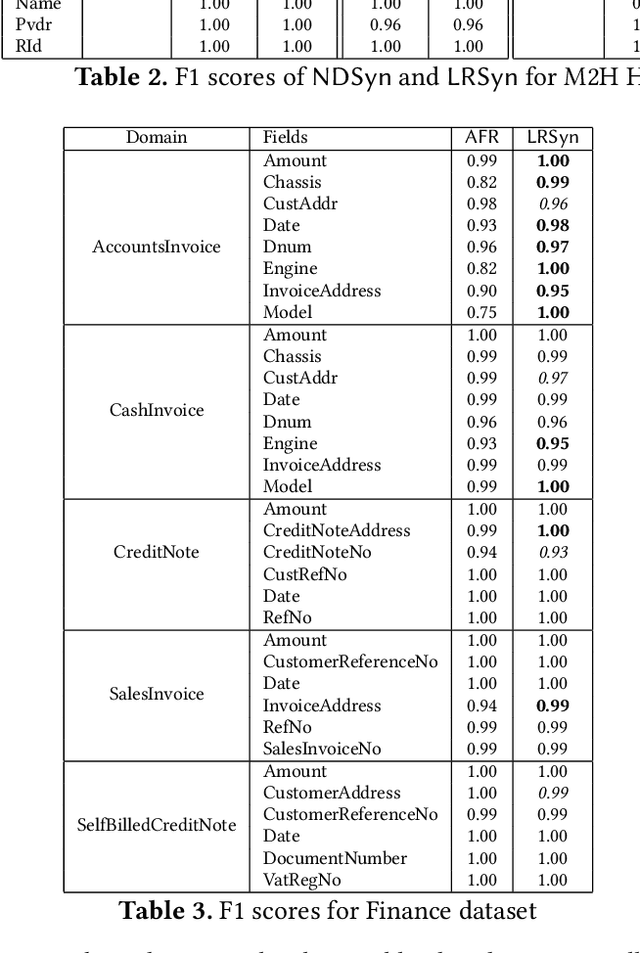Anirudh Khatry
CRUST-Bench: A Comprehensive Benchmark for C-to-safe-Rust Transpilation
Apr 21, 2025Abstract:C-to-Rust transpilation is essential for modernizing legacy C code while enhancing safety and interoperability with modern Rust ecosystems. However, no dataset currently exists for evaluating whether a system can transpile C into safe Rust that passes a set of test cases. We introduce CRUST-Bench, a dataset of 100 C repositories, each paired with manually-written interfaces in safe Rust as well as test cases that can be used to validate correctness of the transpilation. By considering entire repositories rather than isolated functions, CRUST-Bench captures the challenges of translating complex projects with dependencies across multiple files. The provided Rust interfaces provide explicit specifications that ensure adherence to idiomatic, memory-safe Rust patterns, while the accompanying test cases enforce functional correctness. We evaluate state-of-the-art large language models (LLMs) on this task and find that safe and idiomatic Rust generation is still a challenging problem for various state-of-the-art methods and techniques. We also provide insights into the errors LLMs usually make in transpiling code from C to safe Rust. The best performing model, OpenAI o1, is able to solve only 15 tasks in a single-shot setting. Improvements on CRUST-Bench would lead to improved transpilation systems that can reason about complex scenarios and help in migrating legacy codebases from C into languages like Rust that ensure memory safety. You can find the dataset and code at https://github.com/anirudhkhatry/CRUST-bench.
An Empirical Study of Validating Synthetic Data for Formula Generation
Jul 15, 2024Abstract:Large language models (LLMs) can be leveraged to help with writing formulas in spreadsheets, but resources on these formulas are scarce, impacting both the base performance of pre-trained models and limiting the ability to fine-tune them. Given a corpus of formulas, we can use a(nother) model to generate synthetic natural language utterances for fine-tuning. However, it is important to validate whether the NL generated by the LLM is indeed accurate to be beneficial for fine-tuning. In this paper, we provide empirical results on the impact of validating these synthetic training examples with surrogate objectives that evaluate the accuracy of the synthetic annotations. We demonstrate that validation improves performance over raw data across four models (2 open and 2 closed weight). Interestingly, we show that although validation tends to prune more challenging examples, it increases the complexity of problems that models can solve after being fine-tuned on validated data.
TST$^\mathrm{R}$: Target Similarity Tuning Meets the Real World
Oct 28, 2023Abstract:Target similarity tuning (TST) is a method of selecting relevant examples in natural language (NL) to code generation through large language models (LLMs) to improve performance. Its goal is to adapt a sentence embedding model to have the similarity between two NL inputs match the similarity between their associated code outputs. In this paper, we propose different methods to apply and improve TST in the real world. First, we replace the sentence transformer with embeddings from a larger model, which reduces sensitivity to the language distribution and thus provides more flexibility in synthetic generation of examples, and we train a tiny model that transforms these embeddings to a space where embedding similarity matches code similarity, which allows the model to remain a black box and only requires a few matrix multiplications at inference time. Second, we show how to efficiently select a smaller number of training examples to train the TST model. Third, we introduce a ranking-based evaluation for TST that does not require end-to-end code generation experiments, which can be expensive to perform.
Augmented Embeddings for Custom Retrievals
Oct 09, 2023Abstract:Information retrieval involves selecting artifacts from a corpus that are most relevant to a given search query. The flavor of retrieval typically used in classical applications can be termed as homogeneous and relaxed, where queries and corpus elements are both natural language (NL) utterances (homogeneous) and the goal is to pick most relevant elements from the corpus in the Top-K, where K is large, such as 10, 25, 50 or even 100 (relaxed). Recently, retrieval is being used extensively in preparing prompts for large language models (LLMs) to enable LLMs to perform targeted tasks. These new applications of retrieval are often heterogeneous and strict -- the queries and the corpus contain different kinds of entities, such as NL and code, and there is a need for improving retrieval at Top-K for small values of K, such as K=1 or 3 or 5. Current dense retrieval techniques based on pretrained embeddings provide a general-purpose and powerful approach for retrieval, but they are oblivious to task-specific notions of similarity of heterogeneous artifacts. We introduce Adapted Dense Retrieval, a mechanism to transform embeddings to enable improved task-specific, heterogeneous and strict retrieval. Adapted Dense Retrieval works by learning a low-rank residual adaptation of the pretrained black-box embedding. We empirically validate our approach by showing improvements over the state-of-the-art general-purpose embeddings-based baseline.
From Words to Code: Harnessing Data for Program Synthesis from Natural Language
May 03, 2023



Abstract:Creating programs to correctly manipulate data is a difficult task, as the underlying programming languages and APIs can be challenging to learn for many users who are not skilled programmers. Large language models (LLMs) demonstrate remarkable potential for generating code from natural language, but in the data manipulation domain, apart from the natural language (NL) description of the intended task, we also have the dataset on which the task is to be performed, or the "data context". Existing approaches have utilized data context in a limited way by simply adding relevant information from the input data into the prompts sent to the LLM. In this work, we utilize the available input data to execute the candidate programs generated by the LLMs and gather their outputs. We introduce semantic reranking, a technique to rerank the programs generated by LLMs based on three signals coming the program outputs: (a) semantic filtering and well-formedness based score tuning: do programs even generate well-formed outputs, (b) semantic interleaving: how do the outputs from different candidates compare to each other, and (c) output-based score tuning: how do the outputs compare to outputs predicted for the same task. We provide theoretical justification for semantic interleaving. We also introduce temperature mixing, where we combine samples generated by LLMs using both high and low temperatures. We extensively evaluate our approach in three domains, namely databases (SQL), data science (Pandas) and business intelligence (Excel's Power Query M) on a variety of new and existing benchmarks. We observe substantial gains across domains, with improvements of up to 45% in top-1 accuracy and 34% in top-3 accuracy.
Landmarks and Regions: A Robust Approach to Data Extraction
Apr 11, 2022



Abstract:We propose a new approach to extracting data items or field values from semi-structured documents. Examples of such problems include extracting passenger name, departure time and departure airport from a travel itinerary, or extracting price of an item from a purchase receipt. Traditional approaches to data extraction use machine learning or program synthesis to process the whole document to extract the desired fields. Such approaches are not robust to format changes in the document, and the extraction process typically fails even if changes are made to parts of the document that are unrelated to the desired fields of interest. We propose a new approach to data extraction based on the concepts of landmarks and regions. Humans routinely use landmarks in manual processing of documents to zoom in and focus their attention on small regions of interest in the document. Inspired by this human intuition, we use the notion of landmarks in program synthesis to automatically synthesize extraction programs that first extract a small region of interest, and then automatically extract the desired value from the region in a subsequent step. We have implemented our landmark-based extraction approach in a tool LRSyn, and show extensive evaluation on documents in HTML as well as scanned images of invoices and receipts. Our results show that our approach is robust to various types of format changes that routinely happen in real-world settings.
 Add to Chrome
Add to Chrome Add to Firefox
Add to Firefox Add to Edge
Add to Edge